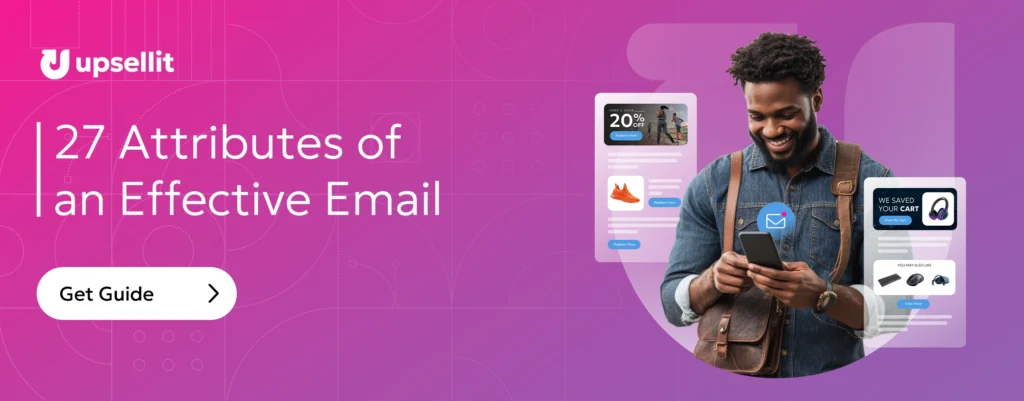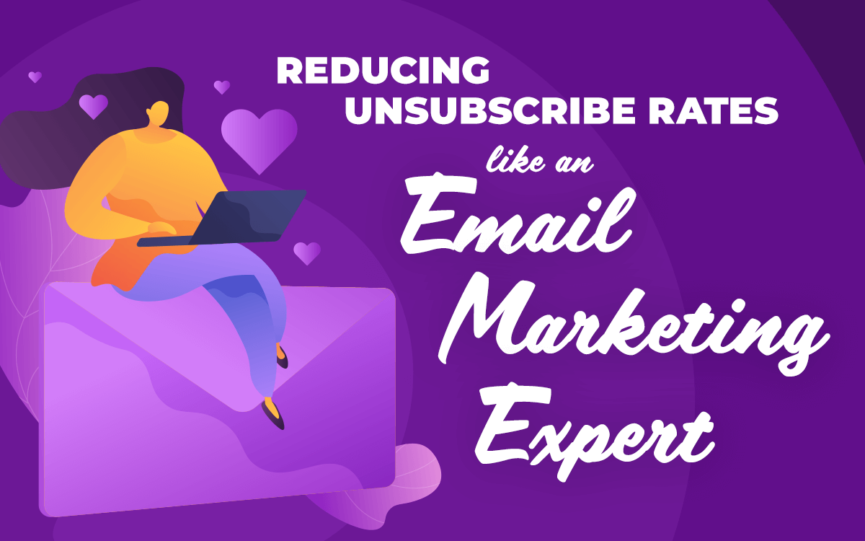Are you looking to reduce email unsubscribe rates? We’ve got you covered! Let’s keep it real – email unsubscribes are bound to happen every so often. It’s just a part of email marketing. Hey, it may even be a good thing to lose subscribers that aren’t engaging with your brand! It’s not you, it’s them. But if we’re being honest, sometimes it is you. And in those instances, there are extremely simple ways to reduce email unsubscribe rates. The best part is that you can start to implement these methods into your email marketing strategy today!
What is an Average Unsubscribe Rate?
The unsubscribe rate refers to the metric used to measure the percentage of email subscribers who opt out from an email list. Average email unsubscribe rates vary by industry, with an overall average of .48%. Is your average unsubscribe rate higher than it should be? Let’s take a look at some accessible methods to reduce email unsubscribe rates. You’ll be feeling like an email marketing expert in no time.
7 Ways to Reduce Your Unsubscribe Rates
1. Use a Double Opt-In Strategy
One great way to reduce your email unsubscribe rates is to implement a double opt-in strategy. This simply means that you require people to confirm their subscription before receiving more emails from you. So, an example of a double opt-in would be someone signing up for your email list via social media, and then receiving an initial email that requires them to confirm their subscription via email. On the contrary, a single opt-in strategy does not require a confirmation of the subscription. Single opt-ins are a quicker and easier way to build a list as there are less actions that need to be taken in order to subscribe. However, this approach is less respectful of the subscriber’s privacy and could clutter your email list with fake emails. By requiring that second step with a double opt-in, you are more likely to build a quality list of real subscribers who will stick around.
2. Set an Expectation of What to Receive
How great is it when someone does what they say they are going to do!? The same goes for businesses. And before you can meet subscribers’ expectations, you have to accurately set them. So, what does setting expectations look like? That depends! You can set expectations prior to sign up or in your welcome email campaign. You can be straightforward, funny, and/or whatever feels on-brand! The main component here is that you keep your promises. So, if subscribers sign up for newsletters and exclusive offers, only send them newsletters and exclusive offers. If you promised to send emails just once a week, don’t start bombarding your subscribers with multiple emails per week! When it comes to emails, transparency is the key to ensuring that subscribers trust the integrity of your brand.
3. Find the Right Email Frequency
In order to lower your average unsubscribes, you’ll want to find the right email frequency. No one likes to receive tons and tons of emails. It can feel overwhelming and spammy, which can lead email subscribers to ditch your list. On the flip side, you don’t want to send emails so infrequently that subscribers forget about you. Here’s a great plan that you can put into action right away: first, set expectations by telling subscribers how often they will receive emails from you. You can even go as far as to let them know what day(s) of the week to expect each message. And if you decide to change up the frequency, let subscribers know! It’s likely that they will appreciate the heads up, transparency, and clear indication that you value each email address on your list.
4. Segment Your List
Segmenting your list means splitting up your subscribers based on certain things. For example, you may want to have a segment of returning customers and a segment of new customers. The reason segmentation works to reduce the amount of people unsubscribing is that it ensures that you send each subscriber only content that is relevant to them. At Upsellit, we refer to this as ‘turning personalization into profit.’ If you’re wondering how to segment your subscribers, it’s easy – just ask them what they’re interested in! You can even tell them why you are asking. Wouldn’t you appreciate a business that wants to send only content you actually care about?
5. Write Relevant Subject Lines
Writing relevant subject lines is a very basic and important, yet often overlooked aspect of email marketing. The reason this helps to reduce unsubscribes is because some unsubscribes are a result of people not getting what they expected upon opening an email. A subject line tells someone what the email will be about. So avoid spam words and false promises. Each time you fill in your email template, make sure the subject line accurately introduces the email content. This doesn’t mean you should skip out on great copywriting though! On the contrary, the best email copywriting is creatively on-brand while remaining straightforward and relevant.
6. Optimize for Mobile
We live in a mobile world and it’s important to keep up. There’s a good chance you’re even reading this article on a mobile device right now! With more than half of all internet traffic coming from a mobile device, businesses simply can’t afford to overlook mobile email marketing strategies. Make sure your emails are optimized for a small mobile screen by using appropriately sized graphics and obvious CTAs. Making it easy for subscribers to engage on the go is a great way to deter them from unsubscribing.
7. Allow Subscribers to Update Their Preferences
Last but not least, you’ll want to allow subscribers to update their preferences. Instead of a simple ‘unsubscribe’ option, why not get more specific? Maybe they only want to receive certain types or frequencies of emails. And if so, wouldn’t that be so much better than losing them altogether?
An Email Marketing Expert in the Making
You’ve probably realized by now that these methods to reduce unsubscribe rates are not complicated. Simply implement them and then continue to monitor your unsubscribes. You can then feel more confident that those who do leave are actually helping you to create a higher quality email list. Go on and add these tactics seamlessly into your existing strategies to feel like an email marketing expert in no time!
Ready to Take Your Emails to the Next Level?
Check out Upsellit’s 27 Attributes of an Effective Email. This is about to become your go-to guide for effective emailing. Grab this resource today!

